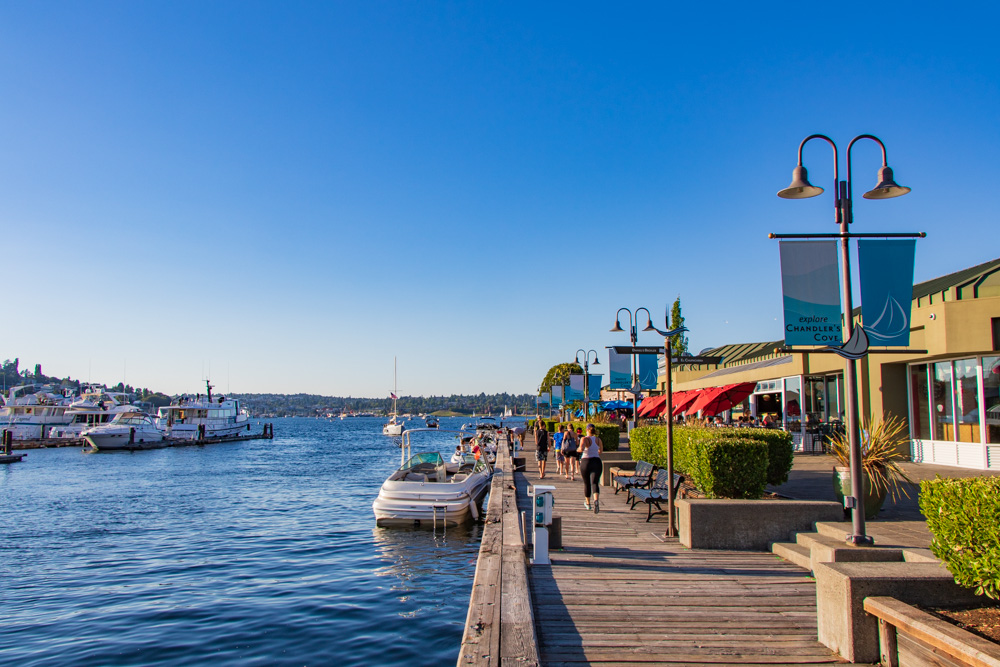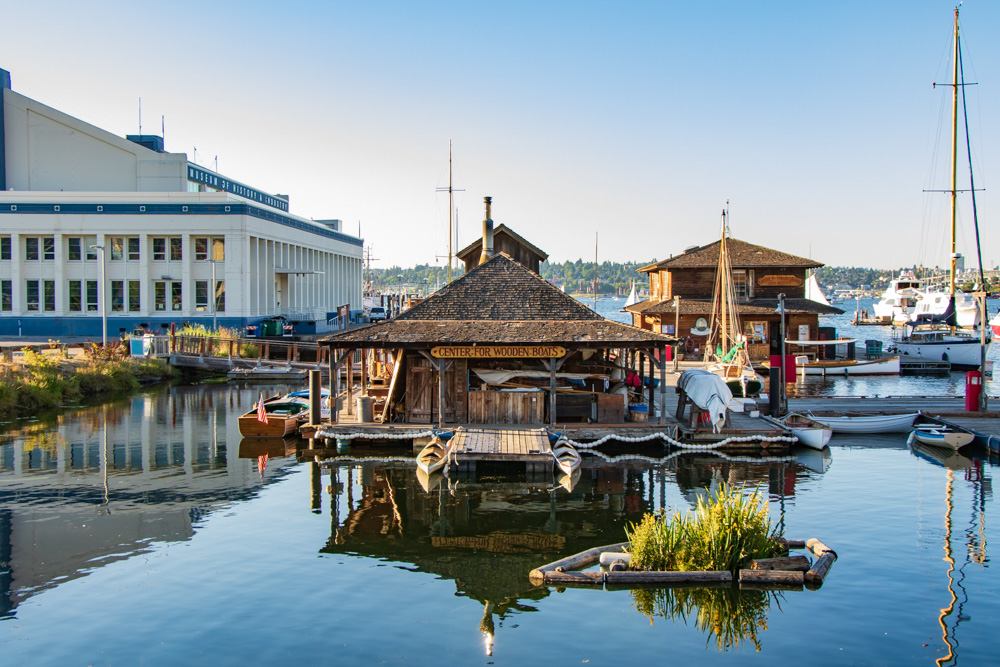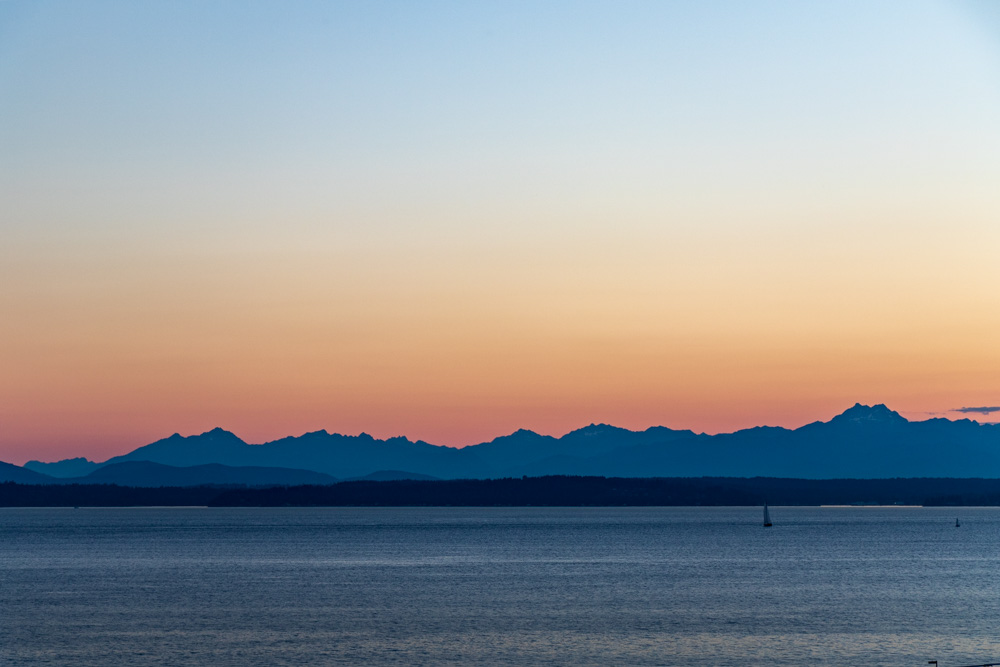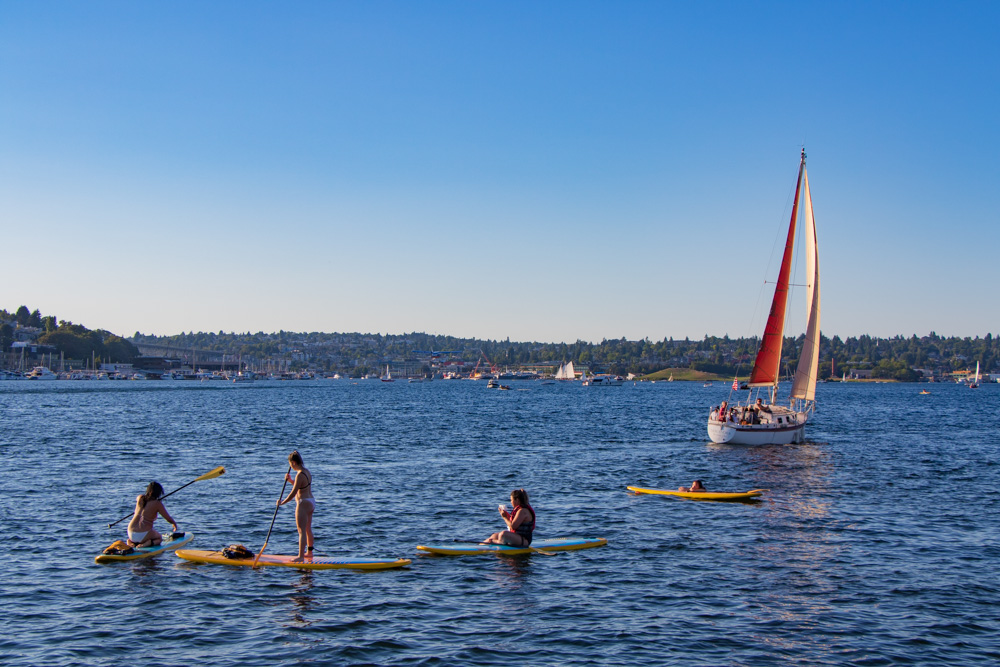This morning, after a quick English muffin breakfast, we left before Pania woke up. We packed our belongings back into Anders (still parked safely on the road with all his windows intact, despite me dreaming about car alarms all night) and got on the road towards the border. Pania had recommended the Truck Route/Pacific Crossing, but Katie found a website showing border delays and it looked like the major Peace Arch crossing was going to be faster.
There were only four cars in front of us when we got to the crossing, and so we just had to wait about 10 minutes. I'd read about the queues being up to 3km long on holiday weekends, so thankfully we didn't need to deal with that. When we got to the booth, we handed our passports out the window, and the guy asked about our plans. All was going well until he asked if we had any fresh produce with us. It turns out you're not allowed to bring most citrus and stone fruit into the USA. He directed us to the secondary processing area and stuck a big printed Post-It on our windscreen showing why we'd been redirected. We parked the car in a big covered parking lot and went inside the nearby building.
The queue inside the immigration building was a lot longer and slower than the one for cars. We waited for at least 15 minutes until we finally got called up to a desk. The lady said that yeah, cherries are definitely not allowed, so they'd need to have a look at what other fruit we had and dispose of the banned stuff. A bio-security lady appeared behind her, and we had to hand over our keys to let her look in our chilly bin.
While she was gone, the immigration officer quizzed us (in a friendly, but still serious way) about our trip to the USA. She wanted to know everywhere we were planning on going, and how long we were staying in each place. I thought she was joking at first, but then I had to list them all to her from the spreadsheet on my phone. She also needed some proof that we were actually going to return to Canada. Airbnb bookings (We have one for Toronto) apparently weren't enough because they can be cancelled. She was, however, satisfied with our Canadian work permits.
The bio-security lady came back with our keys, a punnet of cherries, and a bag with a lemon and a tomato in it. The cherries would have been okay if we could've proven they were from B.C., but as they didn't have any stickers, there was a chance they were from Ontario where a cherry fly lives that the USA doesn't like. I can't recall why they didn't want the lemon and tomato, but it was something to do with fruit-borne pests as well. We got our keys, work permits and passports back (with a visa-waiver stapled in), and were directed to the cashier to each pay a $6 processing fee. After that, we were let out of the carpark and into the USA!

After a quick moment of unit-based confusion (suddenly all the speed limit signs are in miles per hour, but look identical to the Canadian km/h ones) we accelerated off toward Seattle. We'd bought tickets a few days ago for the Boeing factory tour in Everett, so we pulled off the highway (they're so big they have their own exit) right into their parking lot. You aren't allowed to take phones or cameras with you on the tour (they say it's so you don't drop them down into the factory, but I'm sure it's more of a "don't record us" thing) so we dropped them back at the car, and then lined up for the tour.
We started with watching a short film on the history and future of Boeing and then got on a bus that took us across a bridge to the main factory. We arrived at the section where they were building 747-8's and saw several of the large airliners in various states of assembly. The construction line for the 747 is of an old design, where the aircraft is built mainly in place, so the factory can only have 3 or 4 in production at once. This is not such a big problem for them nowadays because worldwide demand for the "Queen of the skies" has dropped off significantly. The majority of their current orders are for cargo versions (we saw one owned by UPS in the final stages of assembly), and they anticipate selling "just a handful" of nonfreighter versions in the years ahead.

Via a freight elevator, a giant tunnel under the factory, and another bus, we arrived at the 787 assembly line. Unlike the 747 which is built entirely on-site, the pieces of the 787 (like the wings, stabilisers, and fuselage sections) are all made offsite (often in other countries). They arrive at the factory pre-wired ready to be joined together, which is usually just a case of some bolts and electrical connections. Because of these lean optimisations, the final assembly time of the Dreamliner is only 3 days! In order to ship all these parts to Everett, Boeing has modified four used 747-400s into 747 Dreamlifters, two of which we saw parked there. These bulbous behemoths were (until two weeks ago) the largest aircraft in the sky, now just beaten by the Airbus Beluga XL (similarly used to transport aircraft parts), which first flew on July 19 2018.
The factory is so large that your eyes have trouble focusing on the farthest points. Buildings aren't meant to be that large, so when your brain asks your eyes to focus there, they don't believe you and kind of refuse. Katie thought that it made her feel slightly nauseous, like her eyes and her brain weren't agreeing with each other. Seeing a building with several 747's parked in just a small section of it really breaks your mind. It has to be experienced first-hand for the full effect. This was the second time doing this tour (I did it with some friends when we visited Canada and the USA back in 2016), and I was just as blown away as last time.
After the tour, we carried on in Seattle to a suburb called Capitol Hill, where we were staying in an Airbnb for the next two nights. Finding parking on these little streets is tough, but we managed to snag one on a steep hill a block away. We let ourselves in through the combination lock on the back door and had a look around. The house is super nice, with a fantastic kitchen and nice artwork everywhere. Unfortunately, in the instructions we received when we booked the place, we were told that we weren't allowed to use the kitchen because of some issue other guests had had with cleaning it. We also found lots of little Post-Its around the place with messages such as "Don't touch the clock!" and "This is for TRASH! Recycling is outside!"

We picked up the guest parking permit that the Airbnb host had left for us (it lets you park on the street for more than 2 hours), and then walked via our parked car down to Lake Union Park, on the shore of Lake Union. There were lots of little boats tied up to a jetty there (marked "Transient Vessels Only"), whose owners were all visiting the nearby bars and cafes.

Nearby we saw the Center for Wooden Boats, which is a museum dedicated to preserving and documenting the maritime history of the Pacific Northwest area of the United States. The current building is an awesome old floating house, surrounded by little jettys with all kinds of wooden boats docked, and a new much more substantial building is almost finished being built right next to it. They let you rent our small rowboats and sailboats for free!

We walked up the hill a little to a place called Flatstick Pub, whose main attraction was a special kind of tabletop minigolf played with flat broom-like golf clubs, which you push rather than swing. We've both decided that we love hazy IPA beer, and this place had a lot to offer in that category from various local breweries.

From here we walked to Pike Place, past the first Starbuck's store (with a big group of people out the front taking photos, even though it was closed) and the empty Pike Place Market building, and watched the sunset looking out over Elliot Bay. We had a yummy pizza at Serious Pie before catching an Uber back to our Airbnb.

